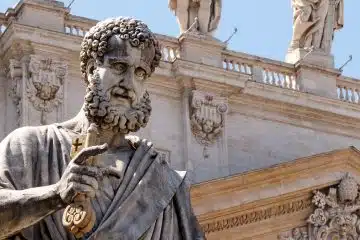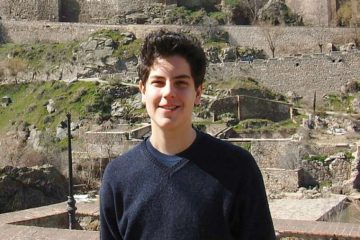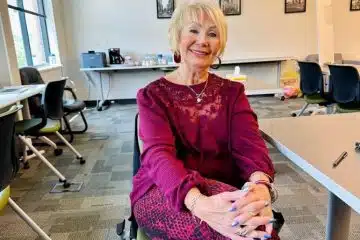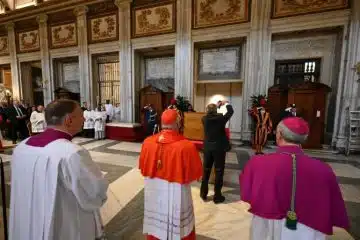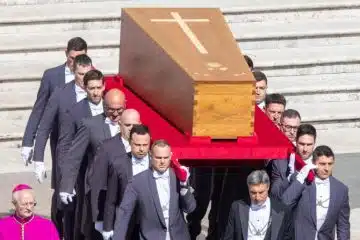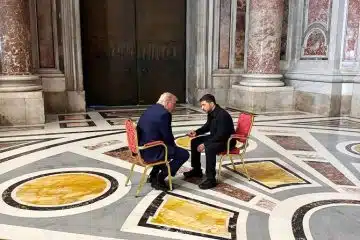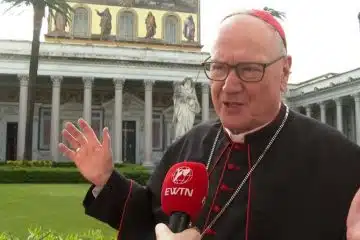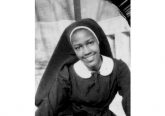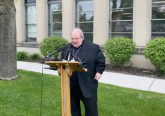Belleville Bishop leads discussion on racial divide in Cincinnati
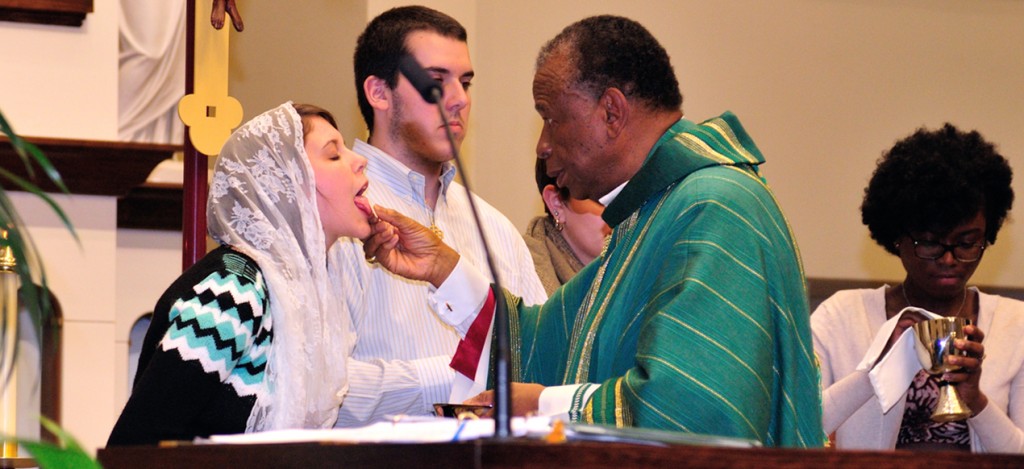
Bishop Edward Braxton of Belleville, Ill., told those gathered at the Cintas Center Nov. 9 that he had no solution for Cincinnati’s racial divide, but he said he had some clear observations for “the vexing questions facing our communities.”
Bishop Braxton shared the Scriptural story of the Good Samaritan to answer the question, “who is my neighbor?” but added that a schoolmate told him once “Birds of feather flock together,” to explain the issue of a racial divide in America. He used the phrase several times in his presentation.
Much of what he said was based on his broadly published pastoral letter, “The Racial Divide in America.” Bishop Braxton had celebrated Mass at the University of Dayton’s Immaculate Conception Chapel Nov. 8 and spoke again on the university campus the evening of Nov. 9. His visit was sponsored by the Archdiocese of Cincinnati’s African-American Catholic Ministries office, by both Xavier and Dayton Universities and by Catholic Charities of Southwestern Ohio.
He also cited what he called a “litany of cases” reported in Cincinnati news media of police violence against African-American young men while adding: “We understand police work is dangerous and officers deserve our respect and gratitude. They find themselves in situations where they have to make life-and-death decisions in a split second.
“Most are fair-minded but there is credible evidence that some are biased,” he said.
Bishop Braxton also noted the “Black Lives Matter” movement had captured the public’s attention with its “dramatic way of calling attention and to confront the consciences of people who are ignoring reality.” He said it is not helpful to try to turn the group’s catch phrase back on them with retorts of “all lives matter,” “blue lives matter” or that black lives should matter to black men. “All they are saying is that in the context of all lives mattering, black lives should also matter,” he explained. “We should understand this and not just in the abstract.”
He said the Catholic Church should do more in the effort to heal the racial divide – of 77 million U.S. Catholics, only three million are black, he said – and he cited that closed schools and parishes in the inner cities, accomplished as an economic necessity as the descendents of European immigrants moved away from city centers, could be a contributing factor. Similarly he said despite the declarations of America’s bishops, he said it is fair to ask if the bishops “have spoken strongly enough.”
While he cited some progress in the church’s efforts, he said, “we must acknowledge that its efforts have fallen short of a still distant goal.”
He acknowledged that although there have been both church and community efforts to bring the races together, “the weight of the U.S. original sin, slavery, creates an undertow.”
Following Bishop Braxton’s presentation, a panel joined him on the stage. Deacon Royce Winters, director of the African-American Catholic Ministries Office, explained that the panel would continue a discussion started during the Major League Baseball All-Star Game in Cincinnati in July. MLB and the Cincinnati Reds, Deacon Winters said, made a commitment ot keep the conversation on race going as solutions were sought for the issues faced by minorities.
On the panel were: Pastor Chris Beard, People’s Church; Bishop Bobby Hilton – Word of Deliverance Ministries; Rabbi David Siff – Northern Hills Synagogue; Iris Roley – Justice Advocate; Richard Biehl – Police Chief, Dayton, Ohio; Eliot Isaac – Interim Police Chief, Cincinnati; Harry Black – City Manager, Cincinnati; Jim Neil – Sheriff, Hamilton County; Ryan Nelson – Division Chief, Hamilton County Prosecutor’s Office, and Dr. Clarence Newsome – President, National Underground Railroad Freedom Center.
The group discussed several aspects of the racial divide, including root causes like poverty and education, the lack of cooperation between groups providing social services and community relations between police and residents.
This story first appeared in the December 2015 print edition of The Catholic Telegraph.


